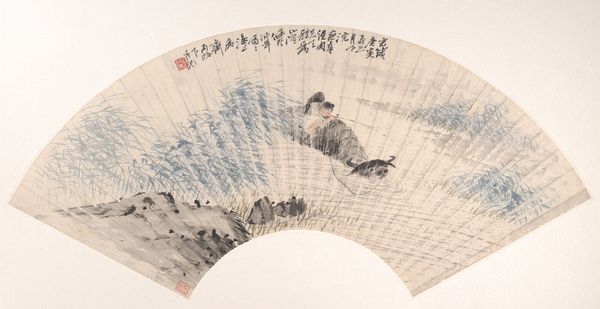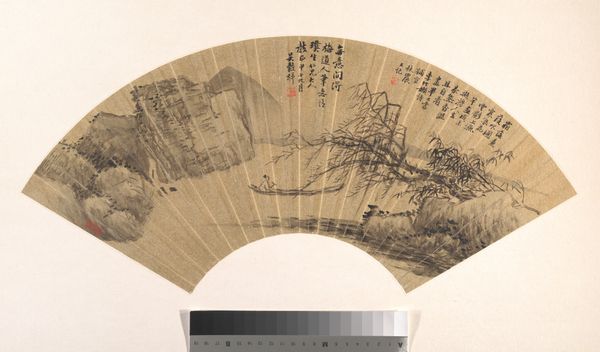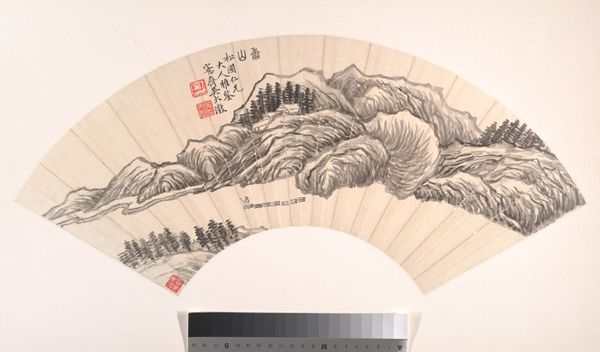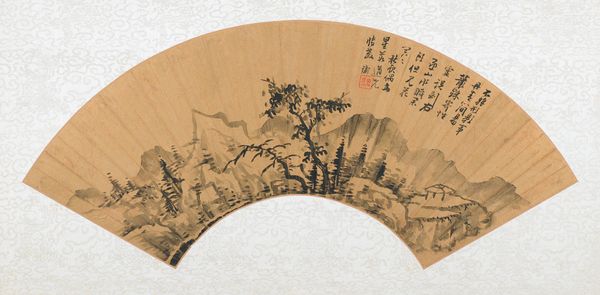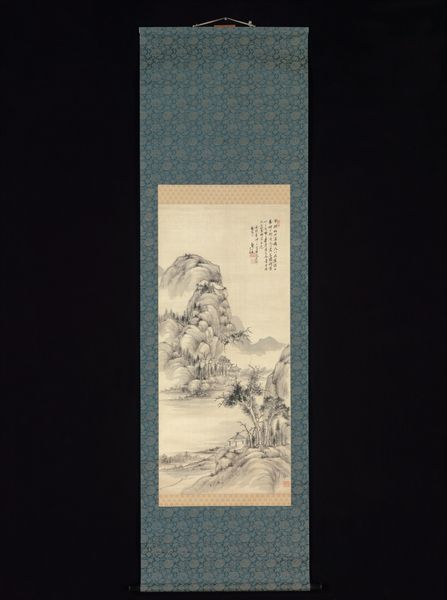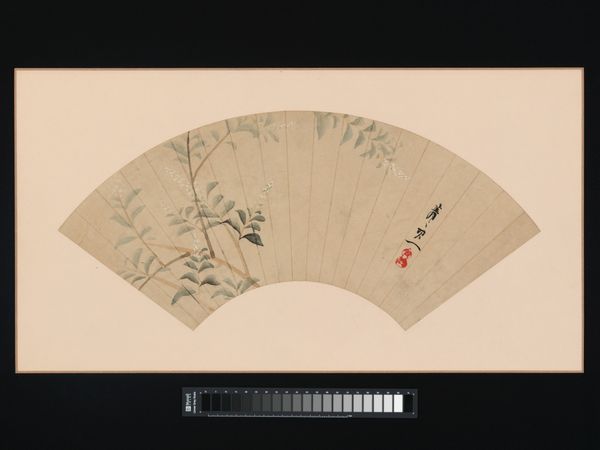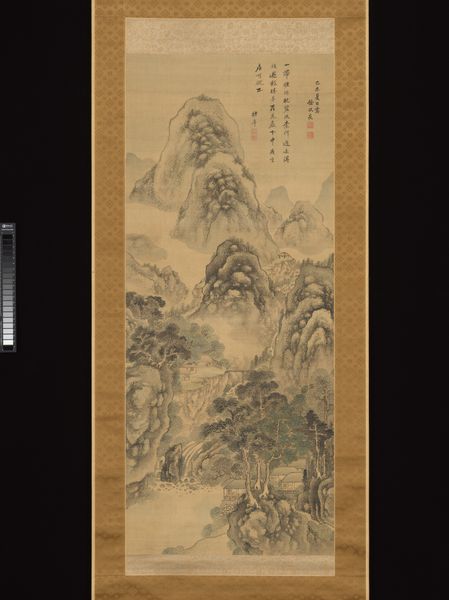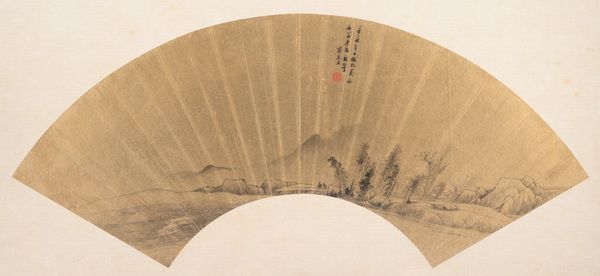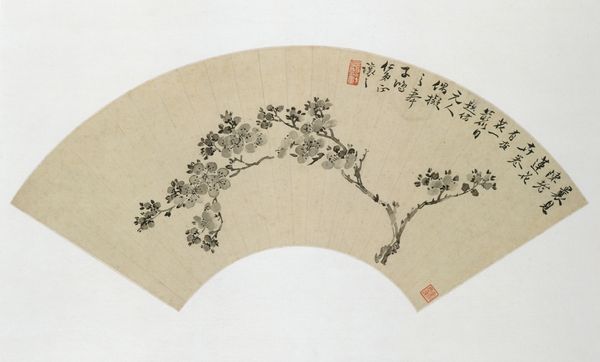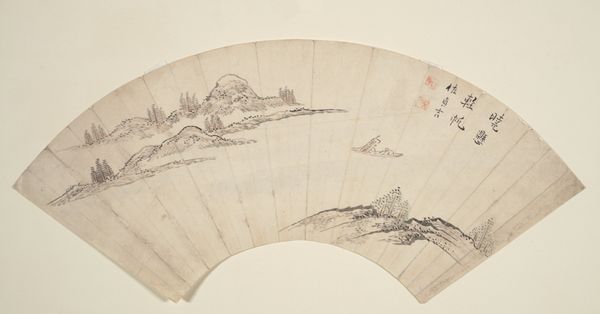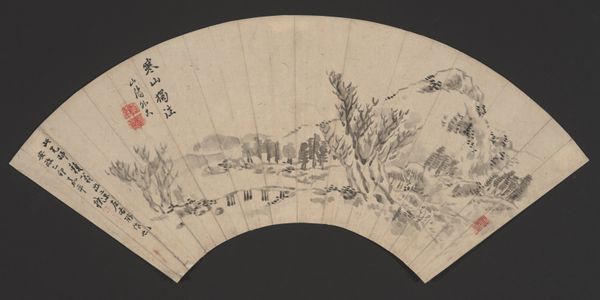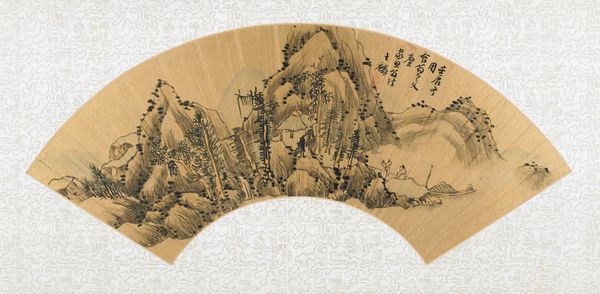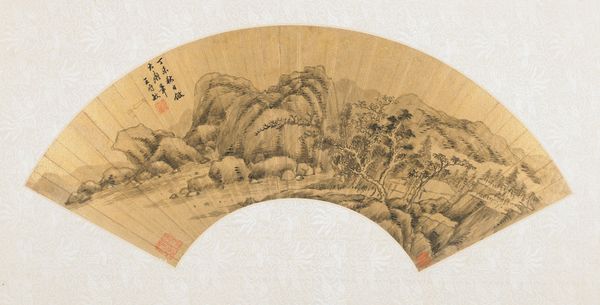
painting, paper, watercolor, ink
#
painting
#
asian-art
#
landscape
#
paper
#
watercolor
#
ink
#
calligraphy
Dimensions: 6 15/16 x 20 1/4 in. (17.6 x 51.4 cm)
Copyright: Public Domain
Curator: Immediately, I’m drawn into this gentle landscape, a delicate world rendered with ink and watercolor on paper. Editor: There's something so calming about this piece. It’s pale, ethereal, but with those jagged mountains dominating the background...it feels more like a memory of a landscape than the thing itself. Almost melancholic, wouldn't you say? Curator: Well, what we're seeing here is “Landscape,” created by Hu Yuan in 1885. It's an exquisite example of Asian art, and it lives here at the Metropolitan Museum of Art. Notice how the fan shape emphasizes the sweeping nature of the scenery depicted, inviting you on a sort of panoramic journey? And then consider how calligraphy can enhance a paintings visual representation and symbolism. Editor: Calligraphy, yes. That block of text seems an integral part of the composition, doesn't it? Does it tell a story, perhaps? Is it meant to be symbolic beyond just being writing on the painting? Curator: Quite right. It often complements the artwork. The calligraphic inscription can serve as both an aesthetic element and provide contextual or thematic enrichment, a commentary or reflection of the landscape depicted. Sometimes it indicates that it has layers of symbolic meanings. The combination of imagery and text creates a richer narrative. This practice speaks to a deeper engagement with the natural world, an attempt to capture not just its likeness, but its essence. Editor: Interesting! The bridge and little house in the lower left, though…they suggest a human presence dwarfed by nature. I'm not sure why, but I like the muted tones here, it’s almost like the colours themselves are whispering secrets. Curator: You picked up on the crucial element of scale here! Notice how small man made structure such as the house seems in comparison to majestic scale of mountains? This comparison evokes cultural attitudes regarding respect, reverance for environment around human societies or individuals interacting harmoniously with. Symbolism inherent with different landscapes is something artist uses for their own meaning. Editor: Now, the little dabs of reddish orange on those trees… almost looks like fire against the somber grays. Is that perhaps symbolizing something too? Rebirth, maybe, or perhaps… endurance. Curator: Potentially. Perhaps these pops of color serve to emphasize cyclical, rhythmic natural world—reminder how fleeting even apparent granduer of rock structures could feel juxtapose to simple tree bursting in flame colour and vitality! These symbols and connotations around "rebirth or transformation," speak volume to endurance nature; an eternal dance renewal/decay within vast landscape shown within. Editor: Makes you think, doesn’t it? This quiet, introspective piece hides a complex conversation. Curator: Indeed! What starts as simple contemplation soon evokes complex perspectives upon nature through history or symbolism. A powerful artwork invites such multilayered explorations of both technique meaning; always new depths discovered again in timeless expression!
Comments
No comments
Be the first to comment and join the conversation on the ultimate creative platform.
